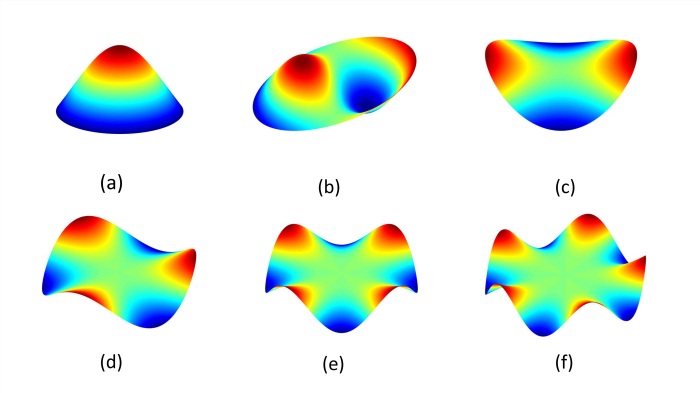Improvement of the Wavefront Correction in Adaptive and Active Optics
In a recent paper by WANG Hairen et al from Purple Mountain Observatory (PMO) of the Chinese Academy of Sciences (CAS), the elastic modes of a general circular thin plate (EMCTP) are proposed, and they are more easily extended to optics systems instead of the use of the standard Zernike polynomials. In Fig, 1, the mode shapes resemble those of the standard Zernike polynomials are shown, and there is almost a one-to-one match between each resonant mode and each standard Zernike polynomials.

After applying the EMCTP to the simulations of the aberrations compensations of the active optics systems, a quantitative comparative study of the active optics corrections is presented in Fig. 2 between the EMCTP and the standard Zernike polynomials. The quantitative analysis results have shown that the EMCTP can not only be used instead of both the standard Zernike polynomials and the annular Zernike polynomials, but also be more effective to compensate the aberrations compared to the two kinds of Zernike polynomials.

Fig. 2 (a) Comparison between the EMCTP and the Standard Zernike polynomials on effectiveness; (b) Comparison between the EMCTP and the annular Zernike polynomials on effectiveness. [Image by WANG Hairen]